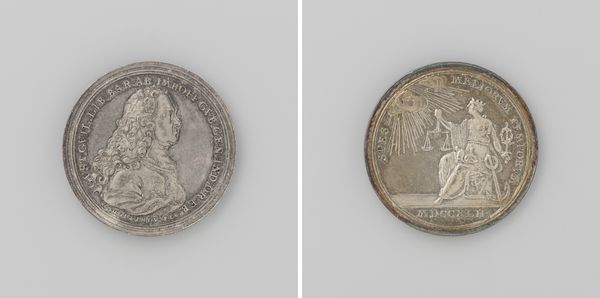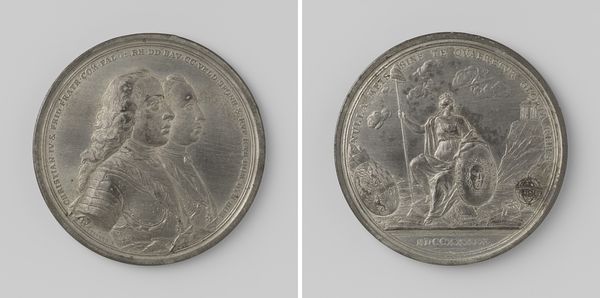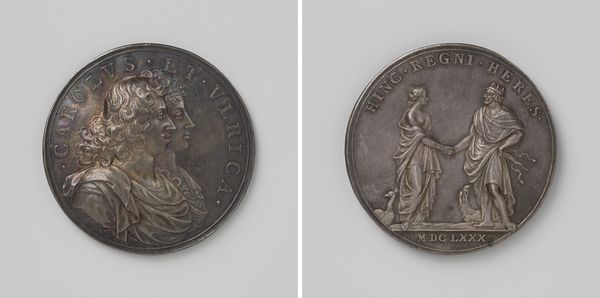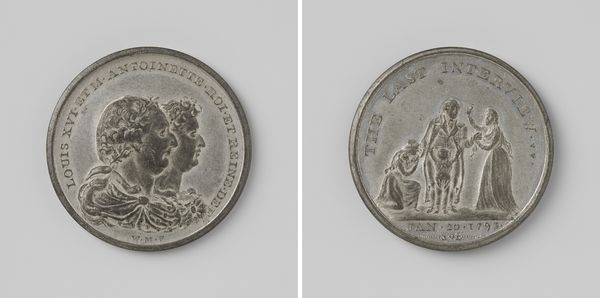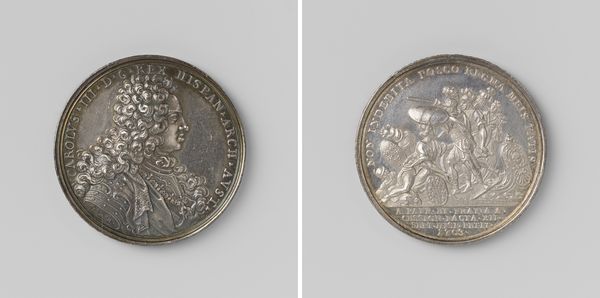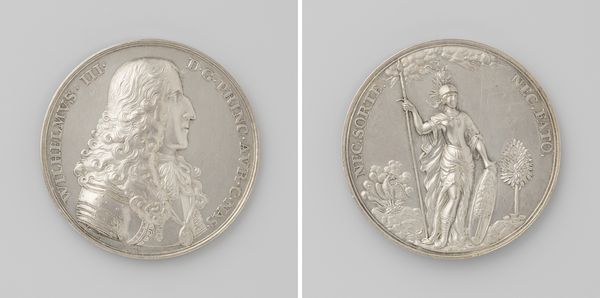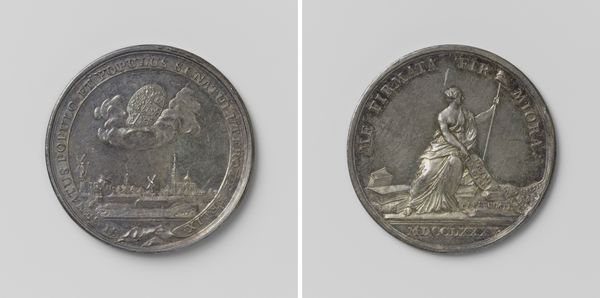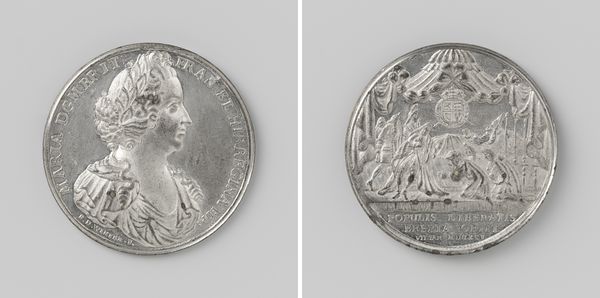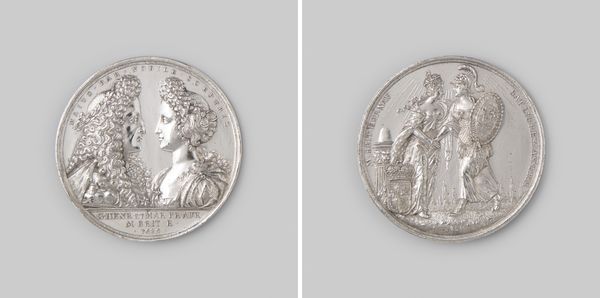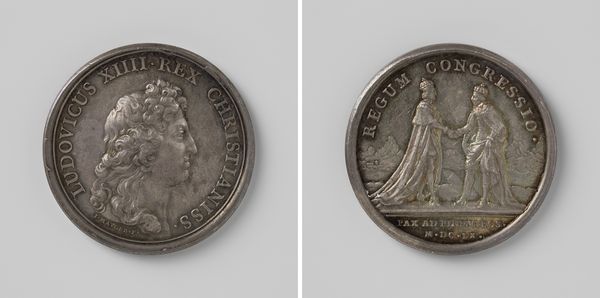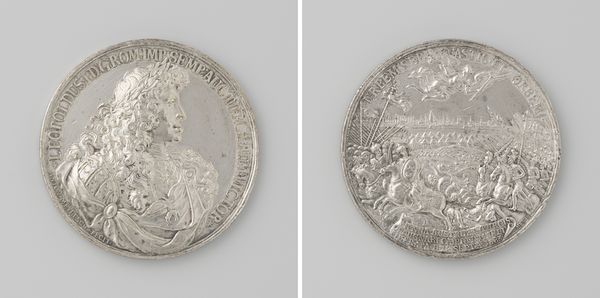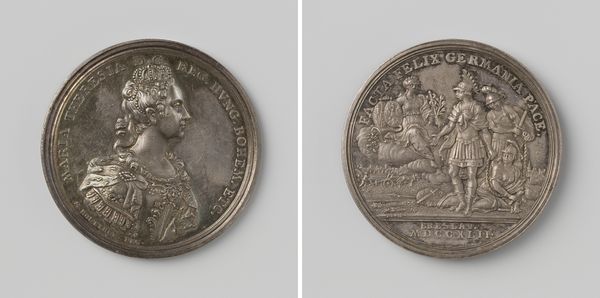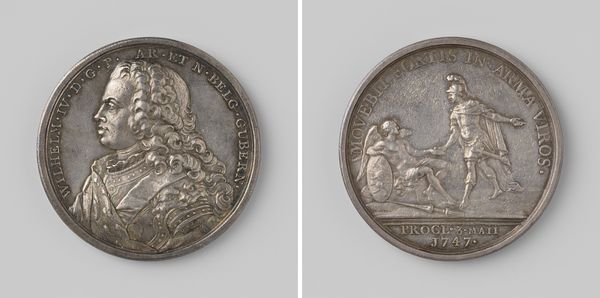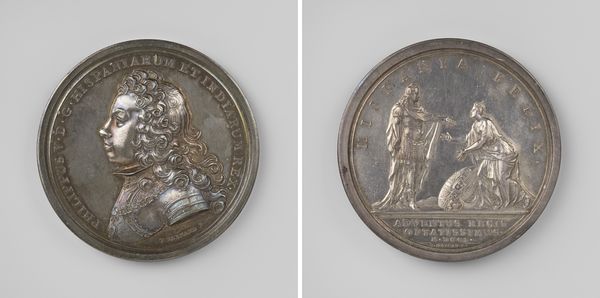
print, metal, relief, engraving
#
portrait
#
baroque
# print
#
metal
#
relief
#
history-painting
#
engraving
#
miniature
Dimensions: diameter 6.2 cm, weight 63.20 gr
Copyright: Rijks Museum: Open Domain
Curator: It's strikingly cold, isn't it? Such austere detail pressed into the surface, evoking an almost unbearable formality. It makes you feel distant from the event, like observing history ossified. Editor: Indeed. What we are looking at here is an engraving, dating from 1730. The work by G.F. Reibisch, known as "Kroning van Tsarina Anna in Moskou 1730," which translates to "Coronation of Tsarina Anna in Moscow, 1730," immortalizes a pivotal moment of Russian imperial power. Curator: Power certainly seems to be the intended message. The stark profile portrait of Anna, the very precise depiction of her regalia. And then the figures to the right seem less portraits than personifications of aspects of power. Editor: You are perceptive. Coronation medals such as this were carefully crafted to project an image of legitimacy and divine right, critical, particularly in periods of political instability or contested succession. The composition places Anna at the heart of the visual narrative. It emphasizes continuity, placing her within a symbolic framework that goes beyond just one historical moment. Curator: The choice of metal – is that silver, do we know? – it gives the image such an austere presence. Every etched line feels deliberate, enhancing the almost frightening power of the Romanovs. A statement that must have been perceived both visually and psychologically. Editor: Likely a metal alloy, maybe bronze, or silver-plated base metals, typical of that period and scale. The engraving translates that feeling into a distributable object. It serves as propaganda, literally in the hands of those deemed worthy. Note the inscription and symbols. What associations do you discern? Curator: The anchoring visual weight of the imperial orb… and Anna’s posture… Everything converges into an expression of dominion, yes, but at the expense of feeling; the weight of duty cast in light and shadow. Editor: Which serves as an important record not only of events, but of what those events signified to different viewers at the time, and the power that controlled such messaging. An object charged by and through history. Curator: It’s easy to overlook the artistic function within such an historical moment; this work demands we think more actively about the forces constructing historical perceptions. Editor: Precisely, we shouldn't think of the engraving as merely documentation; instead, it stands as testimony to how a particular regime saw itself and sought to be seen.
Comments
No comments
Be the first to comment and join the conversation on the ultimate creative platform.
